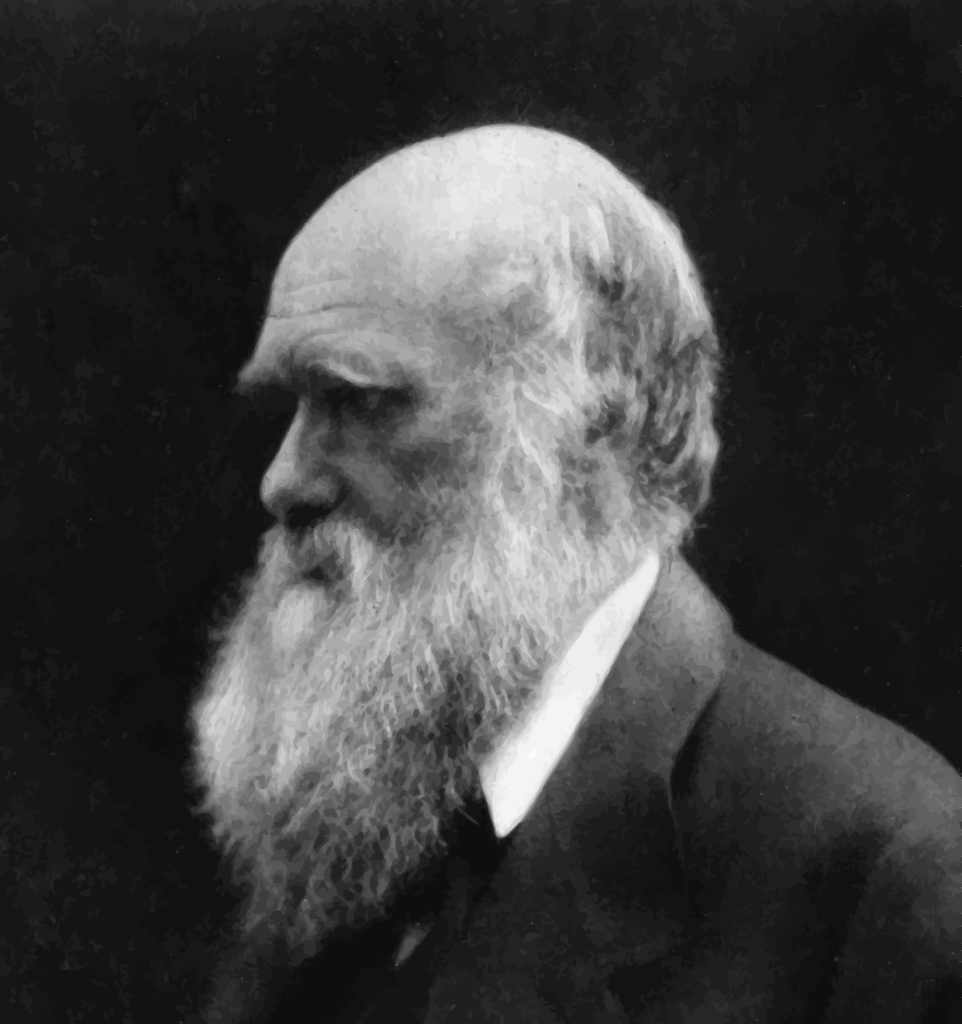Sheer versus Real Possibilities
William A. Dembski
Though Allen Orr raises many objections to No Free Lunch, they ultimately hinge on a question he addresses directly to me in his review: “What’s gained by replacing a mysterious material order with an equally mysterious designer? . . . It would have been interesting to hear Dembski’s [response].” Underlying Orr’s question is David Hume’s concern that design offers no advantage explaining the organization of a material system when that system can equally well be conceived as organizing itself.
In No Free Lunch I argue that material systems are not capable of organizing themselves into complex specified structures apart from intelligence. In particular, I argue that since biological systems exhibit specified complexity, intelligence is involved in their production (just when and how is a matter for further study). Hume’s concern is therefore met with Aristotle’s distinction between nature and design. Nature produces things by self-organization and generation; design (the Greek techne, usually translated “art”) produces things by impressing form from without. Thus, to use one of Aristotle’s examples, acorns have it within themselves to produce oak trees, but raw wood does not have it within itself to produce ships. As Aristotle put it, “The art of ship-building is not in the wood.” Indeed, it requires design.
But how can we tell when a material system is capable of organizing itself and when it requires the addition of design? In biology, how can we tell whether the Darwinian selection mechanism is capable of reorganizing existing biological structures into vastly more complex ones? In No Free Lunch I lay out an information-theoretic apparatus for answering such questions. Orr, to be sure, thinks that this apparatus cannot bear the weight I put on it, especially in biology. It is instructive, however, to see why Orr thinks that. Ultimately, we part company over what it means to attribute a capacity for self-organization to material processes and specifically to the Darwinian mechanism.
To attribute to something an ability or capacity (or for that matter an inability or incapacity) is not nearly as straightforward as Orr seems to think. Indeed, this accounts for Orr’s light dismissal of Michael Behe’s work on irreducible complexity. Behe has argued that irreducibly complex biochemical machines, in which each is necessary for the system’s function, could not be produced by gradual Darwinian means. To say that such systems “could not be produced” is to attribute an inability or incapacity to the Darwinian mechanism. Yet Orr is able to imagine scenarios in which parts are gradually folded into such systems—parts that, though not originally necessary, become necessary over time. Thus, according to Orr, the intelligent design community must admit that “Behe’s chief claim was wrong. Irreducible complexity isaccessible to Darwinism.”
To say that irreducible complexity is accessible to Darwinism means, obviously, that Darwinism is able to access systems displaying that property. But what does it mean to attribute that ability or capacity to Darwinism? Does it simply mean that Darwinists are able to imagine how a Darwinian process might lead to such systems? Or does it mean that Darwinists have realistically assessed the Darwinian selection mechanism’s ability as it actually operates in nature to produce irreducible complexity? Ability wears many faces, is characterized by different forms of possibility (derived from the Latin posse, meaning to be able). Orr, along with much of the Darwinian community, is satisfied with a very undemanding form of possibility, namely, conceivability. So long as he can conceive a Darwinian pathway to irreducible complexity, nature trumps design.
Behe, by contrast, requires a much more demanding form of possibility in assessing the ability of the Darwinian mechanism to produce irreducible complexity. For Behe, it’s a probabilistic form in which highly improbable, functionally specified structures cannot happen by chance. This weds Behe’s work on irreducible complexity to mine on specified complexity. Both Behe and I understand chance here very broadly, and thus include the Darwinian mechanism of natural selection and random variation. The logical force of our argument purports to be the same as “You can’t walk into a Las Vegas casino and get a hundred double zeros in a row playing roulette.” There’s a sheer possibility that this could happen by chance, but not a real possibility.
Now chance in a casino is much more tractable than chance in nature. Hence I need to develop an information-theoretic apparatus for handling chance quite generally. I also need to develop bridge principles for mapping this apparatus onto biology. I do both in No Free Lunch. Orr is dissatisfied with my treatment, but the reason for that dissatisfaction has nothing to do with the coherence and validity of my apparatus or its applicability to biology. The reason, rather, is that for Orr, Darwinism has the alchemical property of transforming sheer possibilities into real possibilities. One can see this at several places in his review.
For instance, he remarks that Behe’s “chief claim was that Darwinism just couldn’t get here from there [i.e., achieve irreducible complexity].” According to Orr, that claim is “dead wrong.” Why? Not because Orr provided detailed, testable, causally specific instances of the Darwinian mechanism producing irreducible complexity, but because he can imagine a Darwinian scenario that gives rise to irreducible complexity. Orr’s criterion for possibility is conceivability. This enables him to sidestep the real limitations confronting the Darwinian mechanism and focus instead on the sheer possibilities that an unbridled imagination can create for the Darwinian mechanism. This is also why he doesn’t like my demand for “causal specificity,” which requires Darwinists to demonstrate that their selection mechanism actually has the causal power to produce irreducible complexity. Instead, Orr substitutes a much weaker demand for “historical narrative,” which in the case of Darwinism degenerates into fictive reconstructions with little, if any, hold on reality.
The subtext of Orr’s review, though unintended, is that Darwinism is not a solution to the problem of biological complexity but an exercise in delusion by which evolutionary biologists convince themselves that they’ve solved the problem when in fact we haven’t.
For a more complete response to H. Allen Orr’s review, please visit:
http://www.designinference.com/documents/2002.12.Unfettered_Resp_to_Orr.htm
Fantastically Flawed Proofs
H. Allen Orr
Though he begins his reply by noting that I raised “many specific objections to No Free Lunch,” William Dembski somehow manages to avoid mentioning—much less rebutting—a single one of them. Instead, we are told that all of my objections hinge on one question: “What’s gained by replacing a mysterious material order with an equally mysterious designer?”
There are two things wrong with this. The first is that it’s simply false. In reality none of my objections to Dembski’s book hinges on this question. Here is a sample of my actual objections to Dembski:
Evolution by natural selection—unlike the algorithms considered by the No Free Lunch (NFL) theorems—is not trying to reach a prespecified target. This pulls the rug out from under Dembski’s bizarre claim that the NFL theorems invalidate Darwinism.
Natural selection does not inevitably lead to simpler structures, as Dembski claims. This is shown by his own two admitted cases of evolution by natural selection, antibiotic resistance and insecticide resistance. There is no reason, then, to conclude that Dar-winism cannot yield “interesting” biological products.
Dembski’s claim that smooth fitness functions are required to “drive large-scale biological evolution” is wrong. Even if fitness functions are rugged and organisms temporarily get stuck on local “fitness peaks,” evolution will start again when the environment changes. Smart money says there have been a fair number of environmental changes over the last 3.5 billion years.
Dembski’s assertion that the above objections (and there are more) boil down to “What is gained by replacing a mysterious material order with an equally mysterious designer?” is simply silly. Given his silence on my actual objections, I can only conclude that he has no answer to them. I am especially surprised that Dembski offers no defense of his attempt to use computing theory generally and the NFL theorems specifically to undermine Darwinism—a claim that represents, after all, the centerpiece of his book. Dembski’s silence here is so deafening that surely even his allies must be surprised. Whether you liked his book or not, you have to admit that he utterly fails to engage what is, to my knowledge, its most detailed published critique.
The second thing that’s odd about Dembski’s claim that my objections boil down to the above question is that he doesn’t even adequately address that one. The question of what’s gained by replacing a mysterious material order with an equally mysterious designer was, as I noted, first raised by Hume in the Dialogues Concerning Natural Religion. Though Dembski spills a good deal of ink over Hume’s query in his reply, he never quite gets around to answering it. As a result, I still can’t fathom what Dembski thinks he accomplishes when he attributes the intricate order manifest in the universe to an equally ordered and equally mysterious designer. What does an “explanation” achieve when it merely moves a question mark?
But enough. What of the bulk of Dembski’s response? Most of his reply is taken up with a defense of Michael Behe, not William Dembski. Dembski is especially eager to defend Behe’s ideas on irreducible complexity. Behe claims that 1) certain biological structures, e.g., the flagellum, are irreducibly complex (IC)—all parts of such a system are required for function; and 2) IC systems cannot evolve in the step-by-step manner demanded by Darwinism. I and others have argued that this is nonsense. Darwinism can produce IC systems, and we described several paths showing how. The path I emphasized was one in which parts get added because they are initially just advantageous (not necessary) but later become necessary because subsequent evolution builds upon them. This process can easily produce a system in which all parts are necessary for function—a system, that is, that’s irreducibly complex. Given that IC systems pose no logical problem to Darwinism, I argued that the Intelligent Design community must come clean: it’s high time for it to confess that the irreducible complexity challenge to Darwinism is dead.
Dembski’s response is to point out that I have merely shown that IC systems can conceivably be built by Darwinism (a point he does not deny), not that such systems were built by Darwinism or even that they were probably built by Darwinism. I am accused, in other words, of having low standards: “Orr, along with much of the Darwinian community, is satisfied with a very undemanding form of possibility, namely, conceivability.” The problem with this is simple. It was Behewho posed the problem in terms of conceivability versus inconceivability. Behe said that Darwinism could not possibly produce IC systems. Behe spoke of “unbridgeable chasms.” Behe asked, “What type of biological system could not be formed by ‘numerous, successive, slight modifications’?” and then answered, “A system that is irreducibly complex.” The discussion has, in other words, taken the following form:
BEHE: Darwinism can’t possibly produce IC systems.
ORR: Darwinism can produce IC systems. Here’s how . . .
DEMBSKI: Orr has merely shown that a Darwinian explanation is possible. What a risibly low standard!
I assume the reader will understand if I seem less than eager to continue such a conversation ad infinitum. So let me close with two quick points. The first is this: Neither irreducible complexity nor the NFL theorems pose any formal problem to Darwinism. Dembski’s reply essentially admits as much, and we’re unlikely to get a plainer admission of the fact. The second point seems so obvious that I hesitate to bring it up. But it is, I think, important. Dembski, Behe and associates may in the end prove a thorn in the side of not only biologists but also the devout. By promising devastating objections to evolution but delivering half-baked technobabble that disintegrates upon close inspection, they subject certain religious persons to unnecessary and traumatic cycles of expectation and dashed hope. The point is that all skirmishes involve risk of friendly fire and the faithful will, sooner or later, have to ask who poses the greater actual danger: those who merely suggest that life evolves or those who routinely announce “proofs” of the handiwork of an interventionist Designer—proofs that have, so far, been fantastically flawed, noisily imploding almost immediately after their much publicized debuts.








